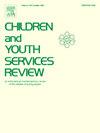查明精神卫生服务方面的差距,并支持在少年法律制度中有精神卫生问题的少数群体青年利用精神卫生服务
IF 1.7
2区 社会学
Q1 FAMILY STUDIES
引用次数: 0
摘要
研究目的:本研究旨在确定少年司法系统(JLS)中少数种族和族裔青少年在服务利用方面是否存在差距,以及在考虑了其他已知的促进或限制服务利用的因素(利用服务的需要、愿望和能力)后,这种差距是否仍然存在。方法:本研究的参与者是少年司法系统中参加法庭转送项目的 174 名青少年(61.3% 为女性)。青少年及其照顾者填写了有关青少年心理健康症状、参与治疗的障碍和治疗动机的调查表。此外,照顾者还填写了一份有关过去三个月中所获得的服务和支持的调查表。结果泊松回归表明,在传统服务(如门诊和住院服务)方面,被认定为黑人的青少年在服务利用率方面存在明显差距。被认定为其他少数种族或民族的身份对服务利用率没有显著影响。然而,与未被认定为拉丁裔的青少年相比,被认定为拉丁裔的青少年获得的非传统支持较少。结论研究结果表明,在首次参与 "联合学生服务 "后的前三个月,黑人青少年与非黑人青少年在服务利用方面存在差距,这种差距持续存在,超出了利用服务的不同需求、愿望和能力的影响。本文对这些发现及其影响进行了研究,并讨论了未来的发展方向。本文章由计算机程序翻译,如有差异,请以英文原文为准。
Identifying gaps in mental health service and supports utilization among minoritized youth with mental health concerns in the juvenile legal system
Aims
The present study was conducted to identify whether a service utilization gap exists for racially and ethnically minoritized youth in the juvenile legal system (JLS) and whether such a gap persists after accounting for other factors known to promote or limit service utilization (need, desire, and ability to utilize services).
Method
Participants were 174 youth (61.3% female) in the JLS participating in a court diversion program. Youth and their caregivers filled out measures pertaining to youth mental health symptoms, barriers to treatment participation, and motivation for treatment. In addition, caregivers also filled out a measure pertaining to services and supports accessed during the past three months.
Results
Poisson regressions indicated that a significant service utilization gap exists for youth who identified as Black across traditional services (e.g., outpatient and inpatient services). Identifying as another racial or ethnically minoritized identity did not have a significant effect on service utilization. However, youth who identified as Latinx accessed fewer nontraditional supports than youth who did not identify as Latinx. These gaps persisted after controlling for other factors known to promote or limit service utilization.
Conclusion
Results indicate that, in the first three months following first involvement with the JLS, Black youth are experiencing a gap in service utilization versus non-Black youth that persists beyond the effect of differing need, desire, and ability to utilize services. These findings and their implications are examined, and future directions are discussed.
求助全文
通过发布文献求助,成功后即可免费获取论文全文。
去求助
来源期刊

Children and Youth Services Review
Multiple-
CiteScore
6.30
自引率
6.10%
发文量
303
期刊介绍:
Children and Youth Services Review is an interdisciplinary forum for critical scholarship regarding service programs for children and youth. The journal will publish full-length articles, current research and policy notes, and book reviews.
 求助内容:
求助内容: 应助结果提醒方式:
应助结果提醒方式:


